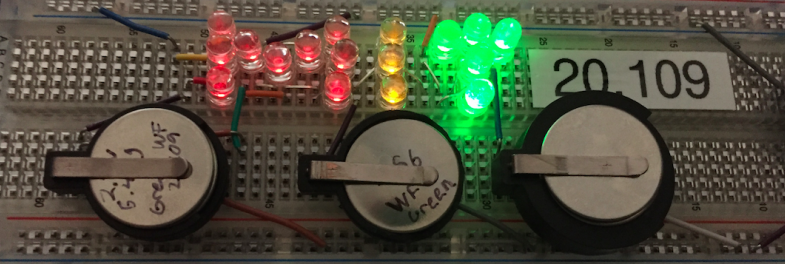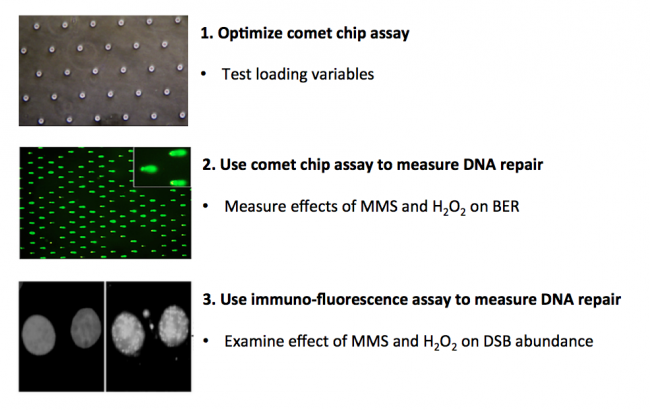20.109(F18):Module 1
Contents
Module 1
Lecturer: Bevin Engelward
Instructors: Noreen Lyell, Leslie McClain and Josephine Bagnall
TA:
Lab manager: Hsinhwa Lee
Overview
In this module you will measure genomic instability using two techniques: the CometChip and immunofluorescence. Your first task is to critically think through the development of the CometChip assay and determine which conditions provide the best results for loading mammalian cells into the device. To this end, you will consider variables that affect cell loading into the microwells of the CometChip. The data you collect will be used to determine the conditions for subsequent assays.
Next, you will use the CometChip assay to measure DNA damage in response to chemical treatments. Specifically, you will study the mechanisms of DNA damage in response to two chemical treatments that are known to induce DNA damage: H2O2 and MMS. Then, you will consider the effect of these chemical treatments on the abundance of double-strand breaks and compare the results to the CometChip data.
Lab links: day by day
M1D1:
M1D2:
M1D3:
M1D4:
M1D5:
M1D6:
M1D7:
Assignments
Data summary
Mini-presentation
References
CometChip: A high-throughput 96-well platform for measuring DNA damage in microarrayed human cells. Journal of Visualized Experiments 92: 1-11. A video of the procedure can be found here.
CometChip: Single-cell microarray for high-throughput detection of DNA damage. Methods in Cell Biology 112: 247-268.

